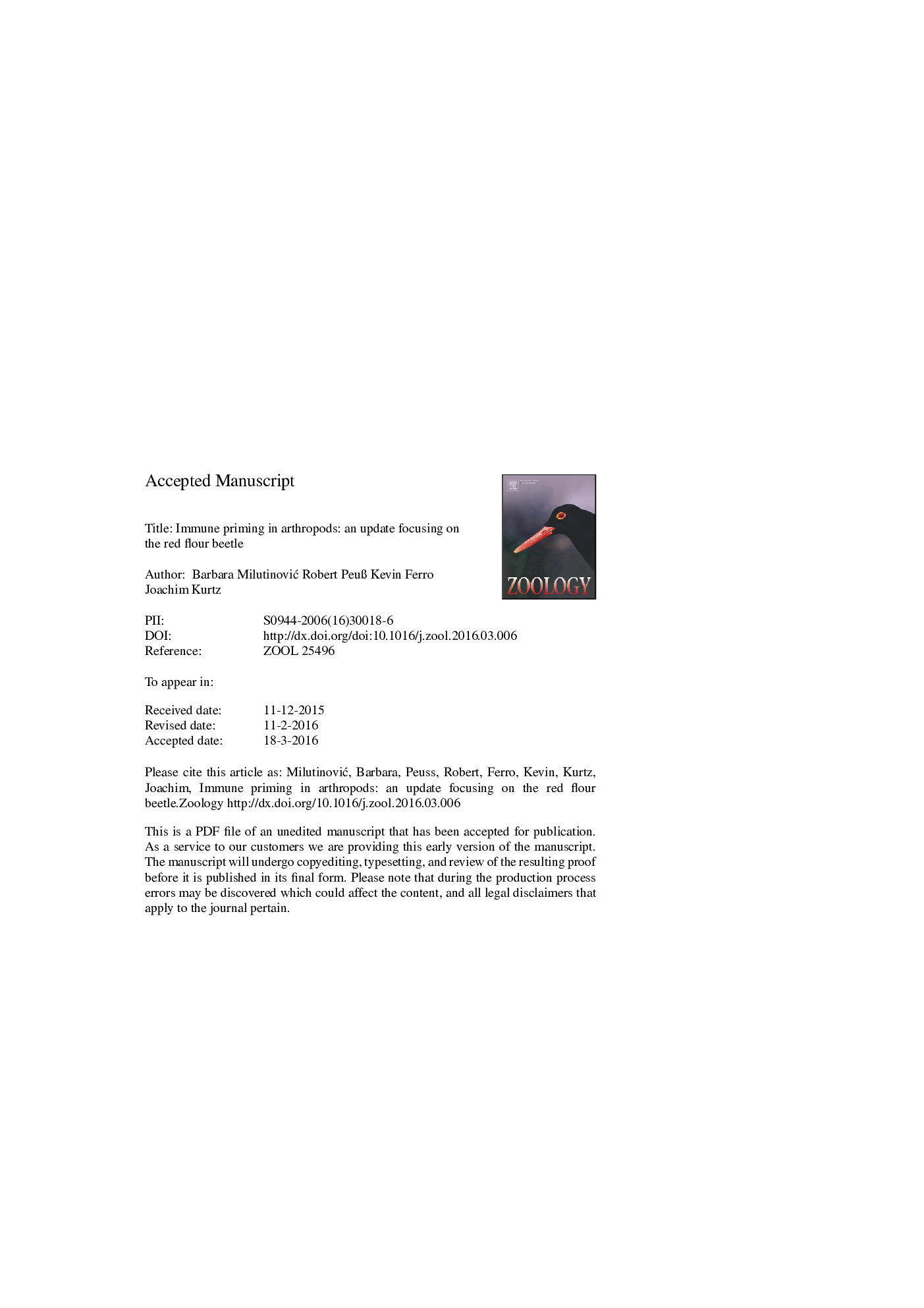| Article ID | Journal | Published Year | Pages | File Type |
|---|---|---|---|---|
| 5586602 | Zoology | 2016 | 25 Pages |
Abstract
Immune priming has now been demonstrated in a wide range of invertebrate species. Studies testing this phenomenon largely differ in terms of experimental design, host-parasite combinations, agents used for priming, and in particular the degree of demonstrated specificity of the primed response. This review provides an overview of known and putative mechanisms underlying broad-spectrum and specific immune priming in arthropods. We focus on insects and particularly the red flour beetle Tribolium castaneum, where priming has been demonstrated within and across generations. We will also draw attention to the relevance of routes of priming and infection, which can occur septically and orally, with largely differing physiology. For oral priming, an involvement of gut microbiota was demonstrated in mosquitoes and flour beetles. Generally, a primed state could result from long-lasting immune activation or a form of memory that does not entail lingering immune components. Moreover, the primed state could also be of a qualitatively different kind than the challenge response. Finally, we will consider that there should be natural variation in priming capability, and therefore a possibility to study this trait with experimental evolution approaches.
Related Topics
Life Sciences
Agricultural and Biological Sciences
Animal Science and Zoology
Authors
Barbara MilutinoviÄ, Robert PeuÃ, Kevin Ferro, Joachim Kurtz,
